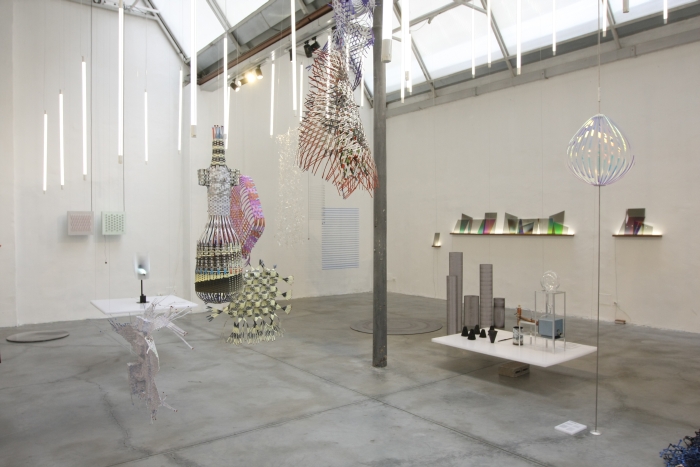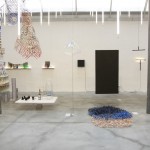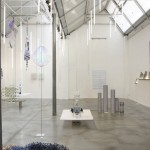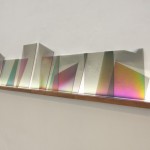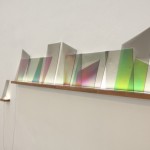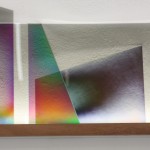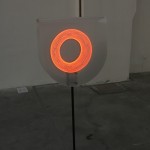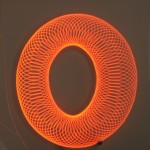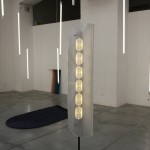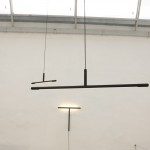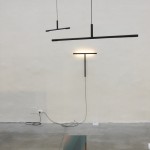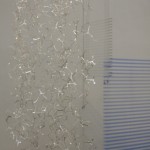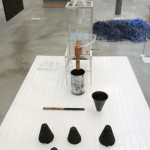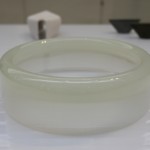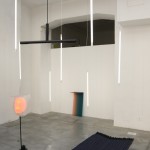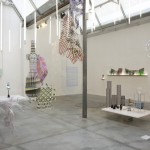Milan Design Week 2015: Dutch Invertuals – Body Language
As a general rule, what you don’t say is more important than what you do say: your body language famously sending discrete messages to those around you, messages which betray your feelings and intentions more eloquently and honestly than you ever could, or indeed would often dare to.
Similarly, an inanimate object’s body language also sends discrete messages which eloquently betray its intentions. An object’s body language being more commonly referred to as its form and the functionalists having long since convinced us that this form follows an object’s function.
But does it? No really? Think about it….. Does it? And even if it does, what do current technological advances and their associated cultural, social and environmental changes mean for concepts such “form”, “function”, “product” and ultimately the nature of our relationships with those objects which surround us?
Such considerations formed the basis of Body Language, the 11th exhibition by Eindhoven based collective Dutch Invertuals and a showcase premièred during Milan Design week 2015.
Or at least in theory formed the basis, as ever with Dutch Invertuals’ exhibitions some of the participants took the brief a little more literally than others, the result however was a fascinating showcase of projects, concepts and products. And for us one of the more gratifying Dutch Invertuals showcases in recent years.
One of the most gratifying aspects of Body Language is and was that it featured updated, concretised, versions of several projects which were first presented as part of the exhibition Cohesion which Dutch Invertuals presented during Dutch Design Week 2014.
Particularly gratifying in this context was the chance to experience the development of Arnout Meijer’s research project “Light is a vector”. We have now seen the light sculpture Light is a vector (projecting a line) which Arnout created during his research as part of three exhibitions, have always thoroughly enjoyed it, and have always questioned where Arnout was going to take it? Where he could take it? The answer is “Every Cone, Every Torus, Every Cylinder Light”, a collection of lamps which employ the principles developed in the course of the Light is a vector research to create a family of lamps where the form of the emitted light changes depending on your viewing perspective and which thus visualises Arnout’s belief that light will increasingly become a construction and styling material rather than merely a source of illumination. While we really, really, really like what Arnout has achieved with light, we equally really, really, really do not like the physical form into which he has packaged the light. But then we suspect the physical objects are not the point, not the raison d’être of the presentation. And regardless, it is without question a very promising, fascinating project and one who’s further development we are thoroughly looking forward to following. A collection of photos that do the project more justice than ours can can be found on Arnout Meijer’s homepage.
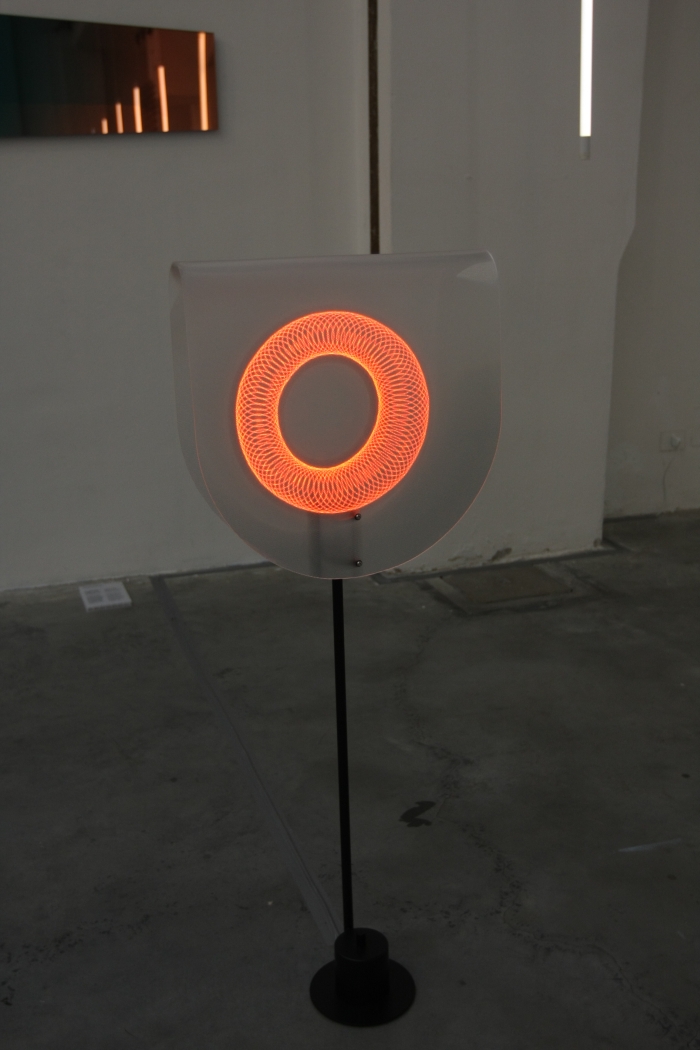
Every Cone, Every Torus, Every Cylinder Light by Arnout Meijer, as seen at Dutch Invertuals – Body Language, Milan Design Week 2015
Similarly gratifying and stimulating are the developments the project Volume 01, 02 & 03 from design studio Alissa + Nienke have undergone. At Cohesion Alissa van Asseldonk and Nienke Bongers a.k.a. Alissa + Nienke presented a series of relatively abstract three-dimensional forms; visually very pleasing, but essentially sculptural, conceptual works. In Milan one understands the full beauty of the research project: biofeedback. Renamed Dialogue 01 and developed in conjunction with Bin Yu from Eindhoven Technological University, Alissa + Nienke’s research is moving towards creating a series of interactive installations which respond to and/or influence biological functions. Particularly appealing to us was an object which features flagella like structures which gently rise and fall, rise and fall, rise and fall, rise and fall. Watch them for few minutes and your breathing pattern begins to follow the movement; on the one hand very unnerving to realise how effortlessly such a central bodily function can be manipulated, but on the other excellent for locations where people need to keep calm, especially people who may have only limited ability to control their behaviour. Or at the dentist. Equally impressive was a “wallpaper” which gently ruffles when subjected to wind or a similar disruption and which thus (re)creates the gentle calm of foliage. Only very, very few of you will remember the truly monumental Mechthild paper humming bird by Christoph Schmidt which won the International Marianne Brandt Contest in 2010: everything we adored about Mechthild is to be found in Alissa + Nienke’s zephyrous “wallpaper”
Less obviously extended from Cohesion but every bit as exciting is and was the project 101.86° from Thomas Vailly & Laura Lynn Jansen. In Eindhoven the pair presented a lamp/table concept in which a “sandwich” of optic plates and plastic allowed pressure points to became visualised. With 101.86° Thomas Vailly & Laura Lynn Jansen have coated an acrylic panel with a polarised film, when two panels are overlapped and the complete construction illuminated, colours become visible. Turn, flip and move one panel and you create a new visual affect. Even black “light” is possible. At the moment 101.86° is probably more applicable for a large installation than a product per se, but a truly excellent piece of work, a beautiful visualisation of the random nature of refraction and a concept we hope Thomas Vailly & Laura Lynn Jansen can harness and further develop.
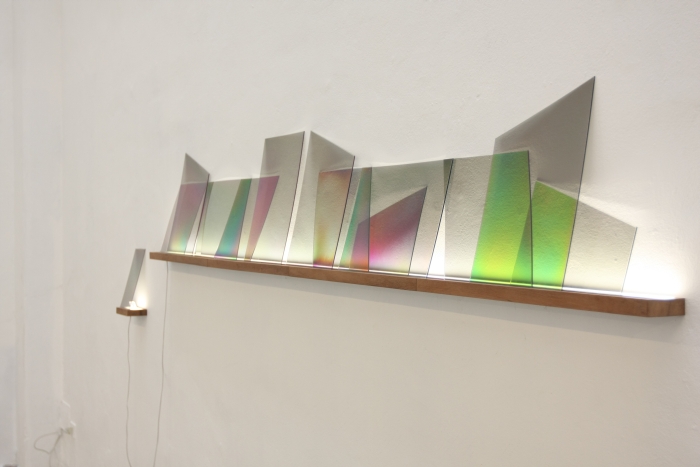
101.86° by Thomas Vailly & Laura Lynn Jansen, as seen at Dutch Invertuals – Body Language, Milan Design Week 2015
In these pages we have of late queried the processes and logic by and via which Eindhoven based designers think. One of the more logical, clearer thinking, Eindhoven studios is Daphna Laurens, and as an example of how they think: Daphna Isaacs & Laurens Manders attended a lecture on nanotechnology by an expert from Eindhoven Technical University where, amongst other topics, a future was presented in which windows are coated in a nanomaterial onto which grime and dirt can’t adhere, consequently making dirty windows a thing of the past. A few days later Daphna stumbled across a shape she really liked, a little research revealing it to be a window cleaning squeegee, albeit a slightly abstract window cleaning squeegee developed by an architectural practice. Instantly it was clear to both Daphna and Laurens: if in the future windows aren’t dirty, you don’t need to clean them and so window cleaning squeegees aren’t necessary. A form loses its function. Appalled by the idea Daphna Laurens set about adapting the window cleaning squeegee into a delightful lighting family crafted from tubular steel. Just as post-modernists misappropriated existing industrial products to create new products with new functions, so do post-industrial designers misappropriate the form of an industrial product to create new products with new functions.
Elsewhere Dutch Invertuals – Body language presented works by Aliki van der Kruijs, Dienke Dekker, Edhv, Germans Ermičs, Nina van Bart, Noman, Tijmen Smeulders, Victoria Ledig and a new project by our all-time favourite developer of glass blower’s rods, Philipp Weber. Called anthacite on the exhibition information board, although we imagine it should be called anthracite, the project features a small scale blast furnace via which coke can be turned into solid objects.
At which point we’d like to quickly clarify that the “coke” involved is the black carbonaceous substance, and not the white tropane alkaloid substance often associated with creative process.
If we’re honest we’re not entirely sure why Philipp is researching turning coke into solid objects, we sadly didn’t meet him in Milan but certainly plan to ask next time we catch up with him; however, and as always with design research, the “why” isn’t important, the “where it leads” is important. Something excellently, and gratifyingly, demonstrated by Dutch Invertuals – Body Language.
Just as gratifying as the exhibition itself was the information that, and assuming all goes to plan, in addition to the usual Milan and Eindhoven presentations Dutch Invertuals will also be presenting their work in a third European city during 2015. More details once, if, all is confirmed. And until then a few impressions of Dutch Invertuals – Body Language in Milan, and a reminder that an online catalogue of all, or almost all, past Dutch Invertuals projects can be found at www.dutchinvertualscollected.nl
- Dutch Invertuals – Body Language, Milan Design Week 2015
- Dutch Invertuals – Body Language, Milan Design Week 2015
- 101.86 by Thomas Vailly & Laura Lynn Jansen, as seen at Dutch Invertuals – Body Language, Milan Design Week 2015
- 101.86 by Thomas Vailly & Laura Lynn Jansen, as seen at Dutch Invertuals – Body Language, Milan Design Week 2015
- …. also generates random black light
- Every Cone, Every Torus, Every Cylinder Light by Arnout Meijer, as seen at Dutch Invertuals – Body Language, Milan Design Week 2015
- Every Cone, Every Torus, Every Cylinder Light by Arnout Meijer, as seen at Dutch Invertuals – Body Language, Milan Design Week 2015
- Dutch Invertuals – Body Language, Milan Design Week 2015
- Inutile by Daphna Laurens, as seen at Dutch Invertuals – Body Language, Milan Design Week 2015
- Inutile by Daphna Laurens and Shaping Colour by Germans Ermics, as seen at Dutch Invertuals – Body Language, Milan Design Week 2015
- Spatial Camo by Edhv, as seen at Dutch Invertuals – Body Language, Milan Design Week 2015
- anthacite / anthracite by Philipp Weber, as seen at Dutch Invertuals – Body Language, Milan Design Week 2015
- Tijmen Smeulders, as seen at Dutch Invertuals – Body Language, Milan Design Week 2015
- Dutch Invertuals – Body Language, Milan Design Week 2015
- Dutch Invertuals – Body Language, Milan Design Week 2015
Tagged with: Body Language, Dutch Invertuals, eindhoven, Milan, Milan Design Week
